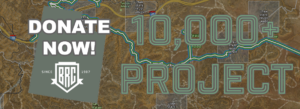The United States Forest Service has initiated the process of updating the Northwest Forest Plan, which has not undergone revision in the past 30 years. This comprehensive plan serves as the guiding framework for managing 17 national forests and an expansive 25 million acres of land throughout the northwest states. The potential impact of this plan is substantial, covering a vast area equivalent to the entire state of Kentucky, spanning 25,483,300 acres. The USFS is inviting public comments on this crucial stage of the planning effort until February 2, 2024.
The Northwest Forest Plan encompasses a range of national forests, including:
- Klamath National Forest All Units
- Lassen National Forest All Units
- Mendocino National Forest All Units
- Modoc National Forest All Units
- Six Rivers National Forest All Units
- Shasta Trinity National Forest All Units
- Deschutes National Forest All Units
- Fremont-Winema National Forest All Units
- Gifford Pinchot National Forest All Units
- Mt Baker-Snoqualmie National Forest All Units
- Mt. Hood National Forest All Units
- Olympic National Forest All Units
- Rogue River-Siskiyou National Forest All Units
- Siuslaw National Forest All Units
- Umpqua National Forest All Units
- Okanogan-Wenatchee National Forest All Units
- Willamette National Forest All Units
Collectively, these forests constitute the Northwest Forest.
To facilitate the update process, a Northwest Advisory Committee has been established to provide recommendations. The notice of intent marks the initial step in the National Environmental Policy Act (NEPA) process, prompted by the identified need to address changes in local communities and the impact of climate change on the region.
On February 2, 2024, the advisory committee for the Northwest Forest will convene to offer additional recommendations and gather feedback. The U.S. Forest Service is particularly interested in public input, acknowledging the critical importance of access and proper management of these forests, many of which have witnessed catastrophic wildfires in the past decade. Given this context, the public is encouraged to share their perspectives by submitting comments below, and if possible, tailor these comments to reflect personal experiences that underscore the significance of preserving these vital landscapes.







